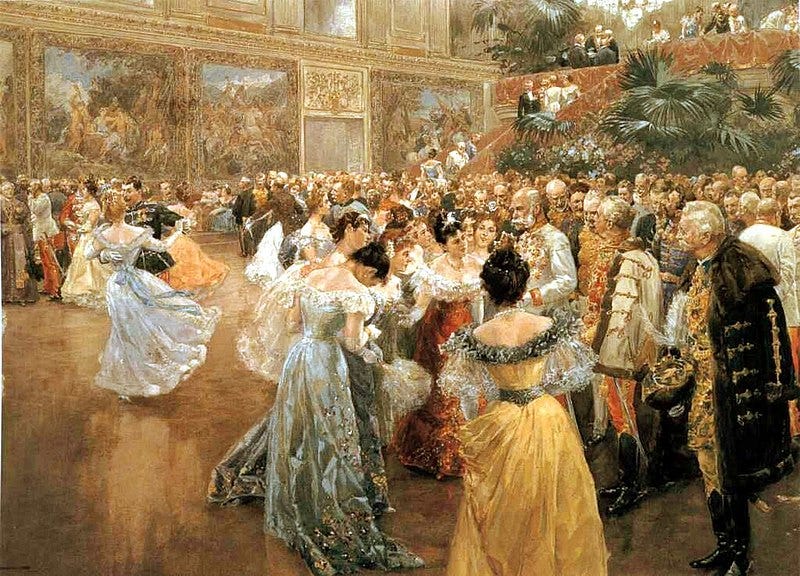When studying history for high fantasy research purpose,1 one thing you learn, and need to learn, is a mental timeline, and a map. It doesn't have to be detailed, but at least a vague idea of the rise and fall of empires and kings, and their relative position in time and space.
This is not so much because this turns up useful things to steal for stories -- though it may -- as to give you a frame to work with. So that if you read stories about giving horses chili peppers, you remember that this has to happen after Columbus. Whether it's horses going West or chili peppers going East.
True, the big problem most people have is ensuring they do not reflexively assume modern things, but sorting out the not-modern things to avoid their blurring together as "historical" -- or even in smaller chunks such as "medieval Europe" or "ancient Near East” is also necessary. Working out what modern things came in when, and where, and how they spread, so you can know what can be used, and what can't. Likewise, working out what historical things came in when, and when they went out again, and where they were used, and whether the place varied over time, so you know which of them naturally go together, and which don't.
For this purpose, it helps to peg things to times and places. Then you can choose what will work sanely together, what needs some world-building spackle2, and what's just insane.
Early knights were simply men who fought -- not even on horseback. "Knight" was in fact a lord's servant, or boy. Off the British Isles, of course, there were other terms that had their own mutations.
What the European countries had in common was the effect on this class of the end of the Dark Ages. With the rising merchant class becoming wealthy and powerful, knights set out to distinguish themselves and invented the knighting ceremony.
This backfired, since it's a lot easier for a merchant to go through a ceremony than to fight in a battle. But that didn't kill the ceremony, which grew more and more elaborate, so you need to consider what era you are aiming at.
Furthermore, in the Dark Ages scenario, the knight served a lord. Probably in a castle. This castle would have all male servants, down to the scullions, except for those ladies immediately attending on the lady, and (for some reason) the laundresses.
This is because at the time, and indeed through the Middle Ages, the castle was not a fortified home. It was a fortress where the lord and his family lived. Everyone was part of the war band.
The small (or large) army of maids doing the housework in black dresses with white aprons points to the nineteenth century, after castles had been knocked down so the king didn't have to bring his artillery back, and such houses as the nobles lived in did not come under attack.
More practice will let you pick up things on hints rather than statements. The poverty of the Dark Ages and the textile industry leads to the conclusion that a masquerade ball would be improbable. Not even at the royal court with all the most powerful would they make a garment for a single purpose. Verifying this turns up that indeed, masquerade balls came in during Renaissance times -- at most, very late medieval.
This consideration weighed even more heavily, and for longer, for the commoners. Solidly into the early modern era, entertainments would have at most a few costumes for prominent actors, which would be kept from decade to decade. Otherwise, they would improvise on existing clothing. Like, oh, men wearing woman's clothes, and women wearing men's.
Even for weddings. A woman would try to get a dress made for her wedding. It would be in the highest degree of formality that she would usually wear, and she would wear it to formal events for the rest of her life. And if she couldn't have one made new, she would take her best dress and wear it.
Some are more subtle. China stuck to chariotry after the Near East and Europe had taken to cavalry, and was in the Bronze Age long after the same area.
You have to dig to find the issues.
China is very poor in pasture, being short in the necessary selenium because of its excellent rainfall. Also, Chinese farmers would encroach on pasture, turning it to cultivation, whenever possible. In the Near East, chariotry was dropped like a hot potato for cavalry -- once the horses were big enough for man to ride. This took longer in China.
On the other hand, the Late Bronze Age Collapse appears to have driven the adoption of iron, by making it too difficult to procure the necessary tin, rather than the other way, which was the common theory not too long enough. China never had a period where trade suffered to that degree and so did not so much switch as glide from using bronze to using iron by degrees. Chiefly as their techniques for working with iron improved.
These, of course, are only examples. There are any number of things you have to slot in place in the timeline to avoid confusion.
Like this
see
Fictional Fusion Of Real-World Royalty
You are building your society, and it's European. True, it drags in elements of early modern Europe through the 19th century, and back to the Renaissance and even the High Middle Ages, but you can work on that. Magic can explain why they wear 19th century fashion not full plate armor, and yet all the noblemen and royalty live in castles. Not the Gothic …






